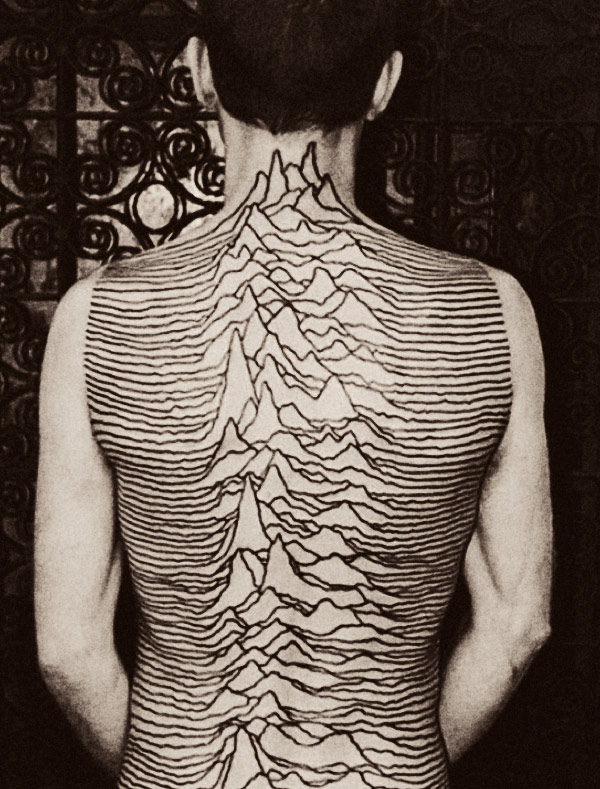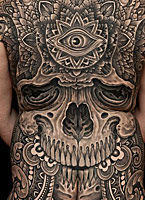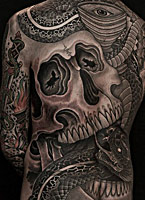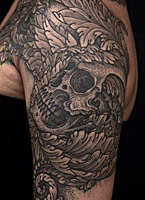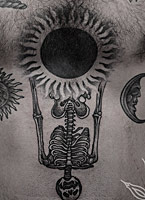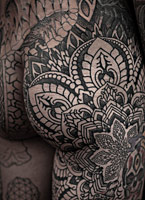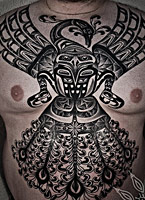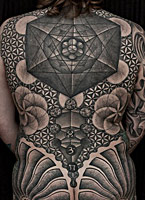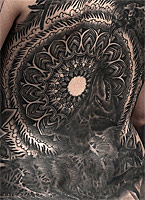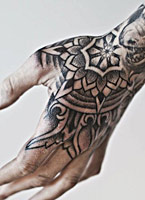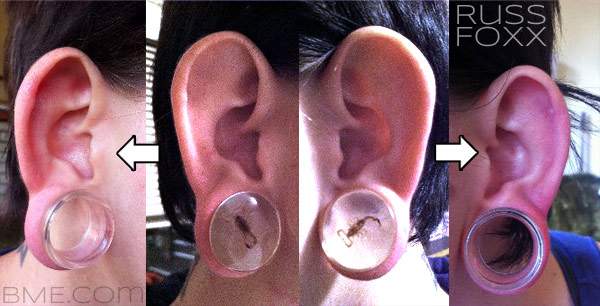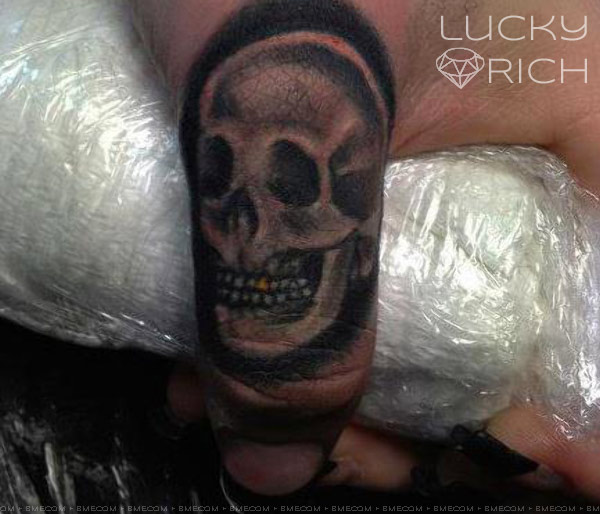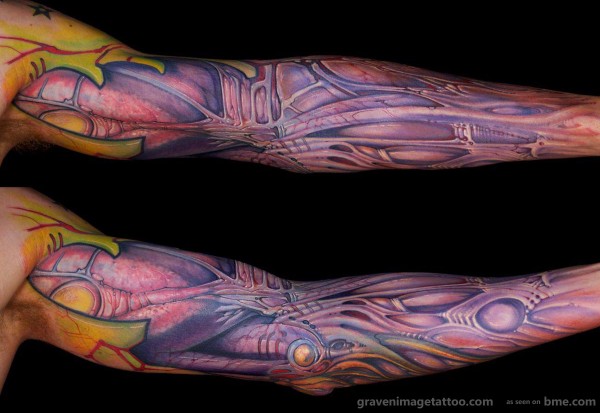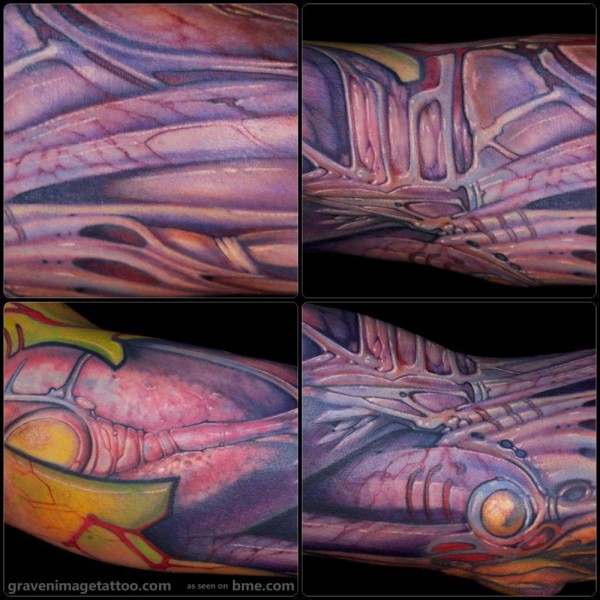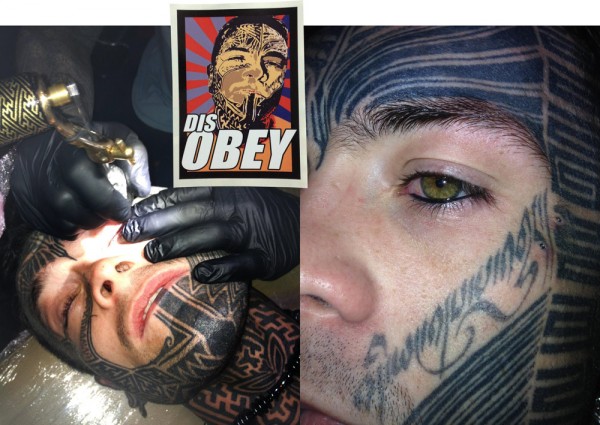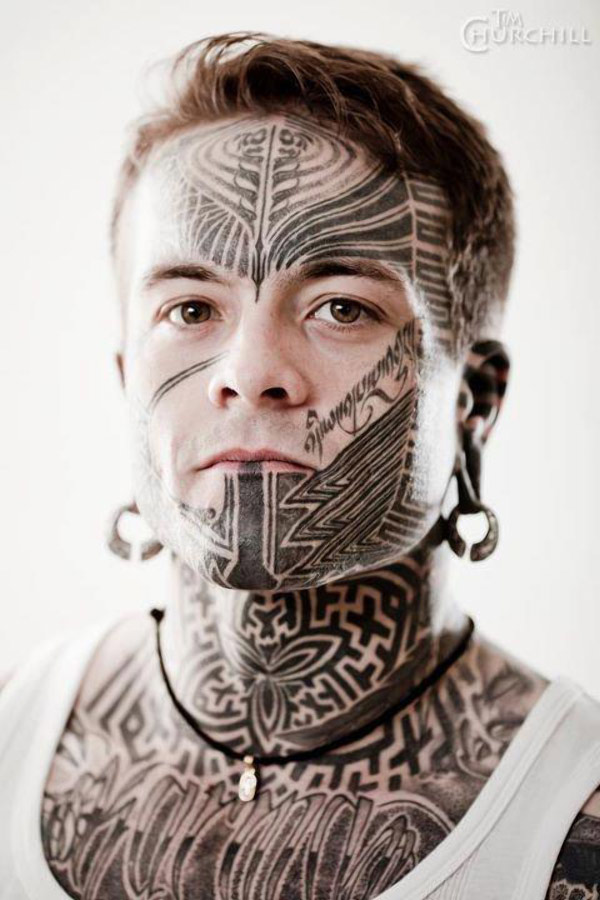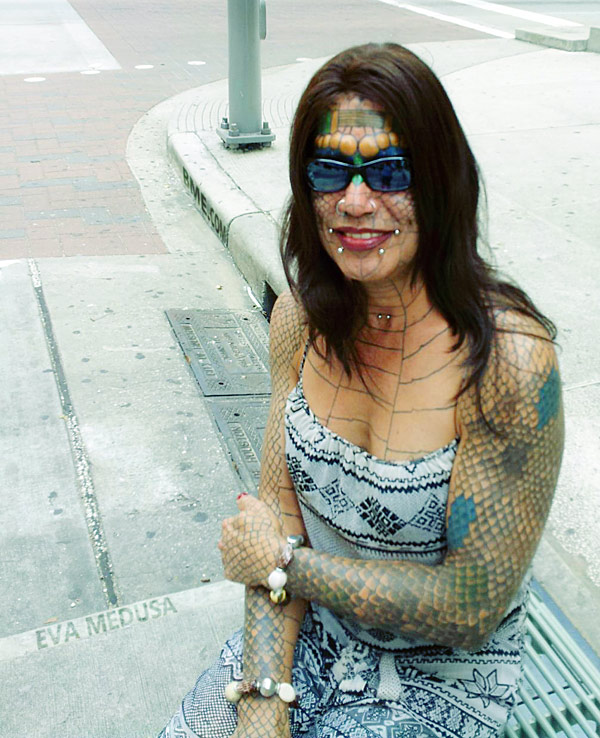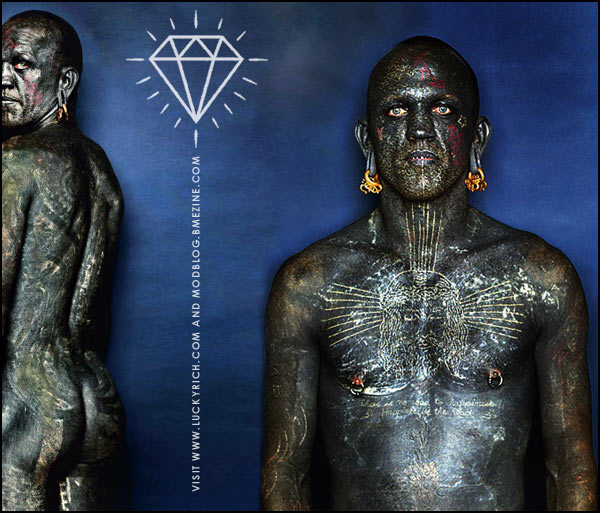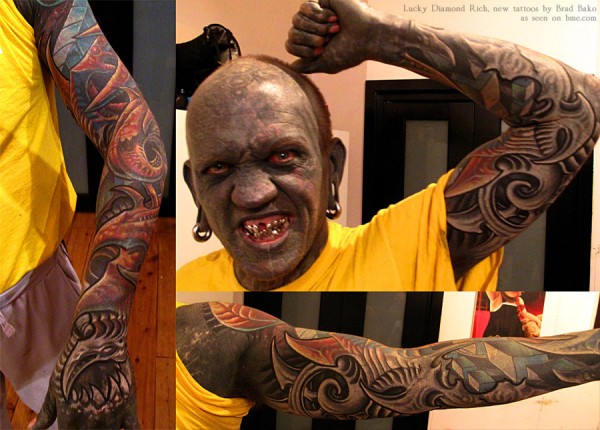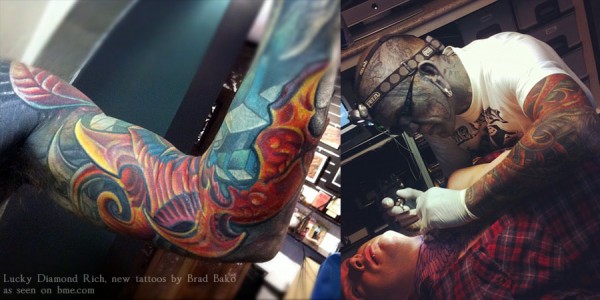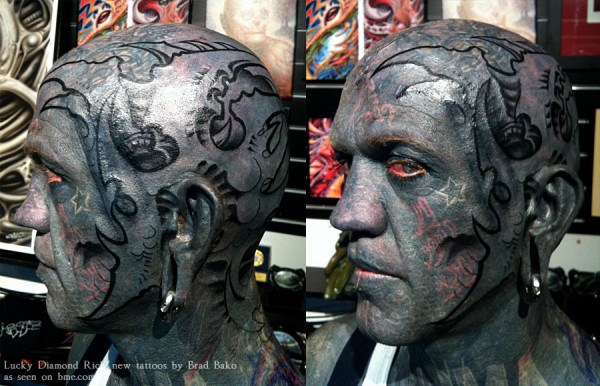One of the most famous “tattooed freaks” of the classic sideshow era — heck, of ANY ERA! — was Horace Riddler, better known as The Great Omi (read more on the BME wiki). I thought it might be interesting to share with you some of the very early news clippings about him — the very first I could discover was dated October 20th, 1934, and was printed in the Lethbridge Herald of Alberta, Canada. Since it’s more than a little hard to read (scanned from old microfiche archives), let me transcribe it:
MIRACLE OF TATTOOING GETS FINISH:The Great Omi, called the ninth wonder of the world, being completely tattooed head to foot. He designed the tattoo patterns himself and the work on his head alone took nine weeks to perfect. Prof. Burchett, shown completing this part of the job, considers it a masterpiece.
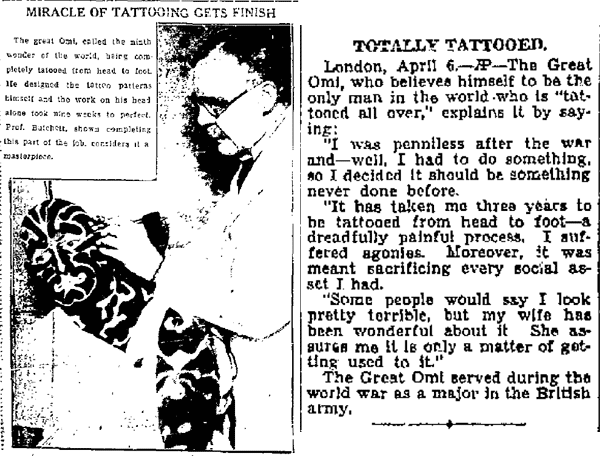
A slightly later AP story expanded on those comments and was widely reprinted in papers across the nation (I happened to find it in the Galveston Daily News of April 7th, 1935). It reads:
TOTALLY TATTOOED: The Great Omi, who believes himself to be the only man in the world who is “tattooed all over,” explains it by saying, “I was penniless after the war and–well, I had to do something, so I decided it should be something never done before. It has taken me three years to be tattooed from head to foot–a dreadfully painful process. I suffered agonies. Moreover, it was meant sacrificing every social asset I had. Some people would say I look pretty terrible, but my wife has been wonderful about it. She assures me it is only a matter of getting used to it.” The Great Omi served during the world war as a major in the British army.
He quickly became the most famous sideshow performer of the time and people clamored to see him all over the world. For a time — especially in late 1934 and 1935 when his tattoo transformation was complete and his popularity exploded — his name became synonymous with tattooing, and if you were a journalist assigned to write about tattoos, odds were good you’d fill some column inches with The Great Omi’s story. For example, I was reading an interesting article about the 1934 Tokyo tattoo convention in The San Antonio Light‘s December 2nd, 1934 edition, and they actually spent more time talking about Omi than the convention itself!
Convention of Tattooed People, But the Champion Didn’t Attend
Despite the fact that it is a misdemeanor, punishable by imprisonment and fine, for a Japanese to have his person indelibly inscribed with the tattooer’s needle, a convention of tattooed people recently was staged in the city. The alert police did not molest the delegates to the conclave because every one of them was able to prove that he, or she, had not been tattooed within the past few years, since the ban has been in force.
As the photograph of some of the delegates shows, when an Oriental makes up his mind to get himself tattooed, he does a thorough job of it and covers himself with the sort of red and blue skin pictures that seamen carry around on their arms and chests.
But the convention was not all that it might have been because the grand champion of all tattooed men–a fellow who calls himself the Great Omi–either was unable to attend or just passed up the event as unworthy of his notice.
While the convention was in session and the human art galleries were getting their pictures in the newspapers of the Japanese capital, the Great Omi was touring the British Isles and astounding people who did not envy him in the least. Not for a million dollars would the average human being let himself be so “ornamented.”
The Great Omi is one of the few tattooed men in the world who has permitted the artists with the needle to work on his face as well as his body. As two of the photographs show, there is hardly a square inch of Omi’s head that isn’t covered with a design that makes him look stranger and more savage than the wildest of African medicine men, who go in for that sort of disfigurement.
Prof. Burchett, said to be the world’s outstanding expert in the art of tattooing, supports Omi’s claim that he is the most tattooed man in the world.
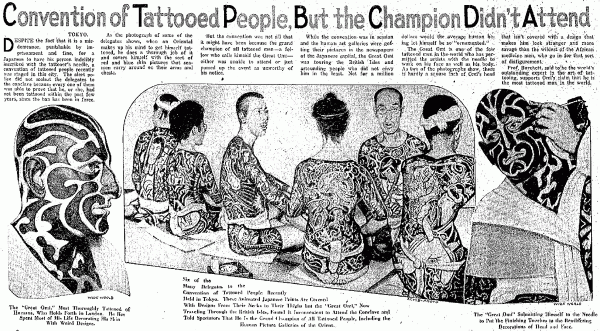
I have corrected Their Annoying Capitalization, but underneath the first photo of Omi it says, “The ‘Great Omi,’ most thoroughly tattooed of humans, who holds forth in London. He has spent most of his life decorating his skin with weird designs.” The rightmost picture of Omi reads, “The ‘Great Omi’ submitting himself to the needle to put the finishing touches to the bewildering decorations of head and face.” Finally, the central picture which is of the convention attendees reads, “Six of the many delegates to the convention of tattooed people recently held in Tokyo. These animated Japanese prints are covered with designs from their necks to their thighs but the ‘Great Omi,’ now traveling through the British Isles, found it inconvenient to attend the conclave and told spectators that he is the grand champion of all tattooed people, including the human picture galleries of the orient.”
In addition to being called “The Great Omi” proper, he was often colloquially referred to as “The Zebra Man”, and then as in now, when you become a pop culture icon, you can expect yourself to be referenced in the most unexpected places. For example, the September 17th, 1938 edition of the syndicated serial pulp comic strip “Ella Cinders” (running from 1925 through 1961), which I think is as good a place as any to end this entry. Zoom in so you can read the words clearly.

